Arms
|
Baron Macpherson of Drumochter, of Great Warley in the County of Essex, [1] is a title in the Peerage of the United Kingdom. It was created in 1951 for the Scottish businessman, public servant and Labour politician Thomas Macpherson. He had previously represented Romford in Parliament. As of 2013 [update] the title is held by his grandson, the third Baron, who succeeded his father in 2008. His heir is his son, the Hon. Daniel Thomas Macpherson, b. 23 January 2013. [2]
The heir apparent is the present holder's son Hon. Daniel Thomas Macpherson (b. 2013).
|
Viscount Leathers, of Purfleet in the County of Essex, is a title in the Peerage of the United Kingdom. It was created on 18 January 1954 for the businessman, Conservative politician and public servant Frederick Leathers, 1st Baron Leathers. He had already been created Baron Leathers, of Purfleet in the County of Essex, on 19 May 1941, also in the Peerage of the United Kingdom. As of 2020 the titles are held by his grandson, the third Viscount, who succeeded his father in 1996.

Baron Faringdon, of Buscot Park in the County of Berkshire, is a title in the Peerage of the United Kingdom. It was created in 1916 for Sir Alexander Henderson, 1st Baronet, who had previously represented Stafford West and St George's, Hanover Square in the House of Commons as a Liberal Unionist. He had already been created a baronet in 1902. He was succeeded by his grandson, the second Baron. He was the son of the Hon. Harold Henderson, eldest son of the first Baron, who predeceased his father. Lord Faringdon was a member of the London County Council. As of 2017 the titles are held by his nephew, the third Baron, who succeeded in 1977. He is the son of the Hon. Michael Thomas Handerson, second son of the Hon. Harold Henderson.
Baron Gisborough, of Cleveland in the County of York, is a title in the Peerage of the United Kingdom.

Baron Glentoran, of Ballyalloly in the County of Down, is a title in the Peerage of the United Kingdom. It was created on 8 July 1939 for the Unionist politician Herbert Dixon. In 1950 he also succeeded his elder brother as third Baronet, of Ballymenock. His son, the second Baron, was also a politician and served as the last Speaker of the Senate of Northern Ireland. As of 2017 the titles are held by the latter's son, the third Baron, who succeeded in 1995. He is a former Olympic bobsleigh gold medallist as well as a soldier, businessman and politician. Lord Glentoran was one of the ninety elected hereditary peers who remain in the House of Lords after the passing of the House of Lords Act 1999, and sat on the Conservative benches until his June 2018 retirement under the House of Lords Reform Act 2014.
Baron Grantchester, of Knightsbridge in the City of Westminster, is a title in the Peerage of the United Kingdom. It was created on 30 June 1953 for the banker and Liberal politician Alfred Suenson-Taylor. As of 2019, the title is held by his grandson, the third Baron, who succeeded his father in 1995. In 2003, he replaced the deceased Lord Milner of Leeds as one of the ninety elected hereditary peers that are allowed to remain in the House of Lords after the passing of the House of Lords Act 1999. Lord Grantchester sits on the Labour benches.

Baron Grimston of Westbury, of Westbury in the County of Wiltshire, is a title in the Peerage of the United Kingdom. It was created in 1964 for the Conservative politician and former Deputy Speaker of the House of Commons, Sir Robert Grimston, 1st Baronet. He had already been created a baronet in 1952. Grimston was the son of Reverend Canon the Hon. Robert Grimston, third son of James Grimston, 2nd Earl of Verulam. As of 2017 the titles are held by his grandson, the third Baron, who succeeded his father in 2003.

Baron Darling, of Langham in the County of Essex, is a title in the Peerage of the United Kingdom. It was created on 12 January 1924 for Sir Charles Darling, a former Conservative Member of Parliament for Deptford and Judge of the High Court of Justice. As of 2017 the title is held by his great-grandson, the third Baron, who succeeded his father in 2003.
Baron Kenswood, of St Marylebone in the County of London, is a title in the Peerage of the United Kingdom. It was created in 1951 for the professional violinist and welfare worker for the blind, Ernest Whitfield. As of 2017 the title is held by his grandson, the third Baron, who succeeded in 2016.
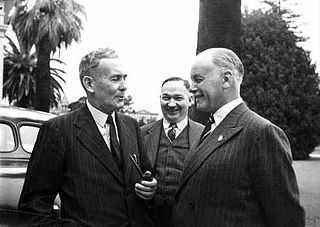
Baron Norrie, of Wellington in New Zealand and of Hawkesbury Upton in the County of Gloucester, is a title in the Peerage of the United Kingdom. It was created on 22 August 1957 for Sir Willoughby Norrie upon his retirement as Governor-General of New Zealand. As of 2010 the title is held by his eldest son, the second Baron, who succeeded in 1977.
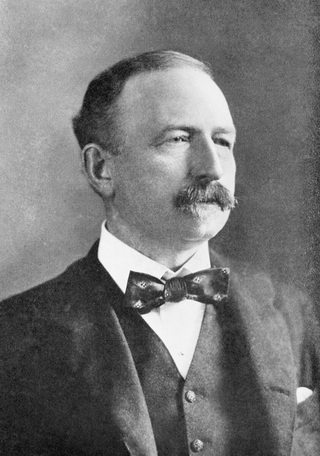
Baron Shaughnessy, of the City of Montreal in the Dominion of Canada and of Ashford in the County of Limerick, is a title in the Peerage of the United Kingdom. It was created in 1916 for the Milwaukee born businessman Thomas Shaughnessy, president of the Canadian Pacific Railway Company. He was succeeded by his eldest son, the second Baron, a Director of the CPR and of the Canadian Bank of Commerce. His son, the third Baron, was a businessman and was also active in the House of Lords. However, he lost his hereditary seat in parliament after the House of Lords Act 1999.

Baron Strathcarron, of Banchor in the County of Inverness, is a title in the Peerage of the United Kingdom. It was created on 11 January 1936 for the Liberal politician Sir Ian Macpherson, 1st Baronet. He had already been created a baronet, of Drumalban on 26 April 1933. As of 2017, the titles are held by his grandson, the third Baron, who succeeded his father in 2006.
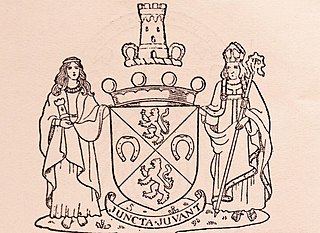
Baron McGowan, of Ardeer in the County of Ayr Scotland, is a title in the Peerage of the United Kingdom. The current title holder is Harry John Charles McGowan, 4th Baron McGowan.

Baron Monteagle of Brandon, in the County of Kerry, is a title in the Peerage of the United Kingdom. Before his final exile, James II had intended the title to be conferred upon one of his supporters, Stephen Rice in the Jacobite peerage. Instead, it was created in 1839 in the reign of Queen Victoria for the Whig politician Thomas Spring Rice, a descendant of Stephen Rice. He served as Chancellor of the Exchequer between 1835 and 1839. He was succeeded by his grandson, the second Baron, his eldest son the Hon. Stephen Edmund Spring Rice having predeceased him. The second Lord Monteagle was a unionist politician and was made a Knight of the Order of St Patrick in 1885. On his death, the title passed to his son, the third Baron. He held minor diplomatic office. He was succeeded by his uncle, the fourth Baron. He was the younger son of the aforementioned the Hon. Stephen Edmund Spring Rice, eldest son of the first Baron. As of 2017 the title is held by the fourth Baron's great-grandson, the seventh Baron, who succeeded his father in 2013.
Baron Meston, of Agra in the Indian Empire and Dunnottar in the County of Kincardine, is a title in the Peerage of the United Kingdom. It was created on 29 December 1919 for the Indian civil servant and former Lieutenant-Governor of the United Provinces of Agra and Oudh, Sir James Meston. As of 2023 the title is held by his grandson, the third Baron, who succeeded his father in 1984 and, having been excluded by the House of Lords Act 1999, was elected to return to the House in 2023. He is a barrister and judge.
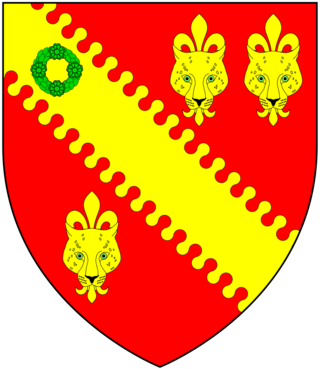
Baron Tennyson, of Aldworth in the County of Sussex and of Freshwater in the Isle of Wight, is a title in the Peerage of the United Kingdom. It was created in 1884 for the poet Alfred Tennyson. His son, the second Baron, served as Governor-General of Australia, and his grandson, the third Baron, as a captain for the English cricket team. On the death in 2006 of the latter's younger son, the fifth Baron, the line of the eldest son of the first Baron failed. The title was inherited by the late Baron's second cousin once removed, the sixth and present holder of the peerage. He is the great-grandson of Hon. Lionel Tennyson, second son of the first Baron.
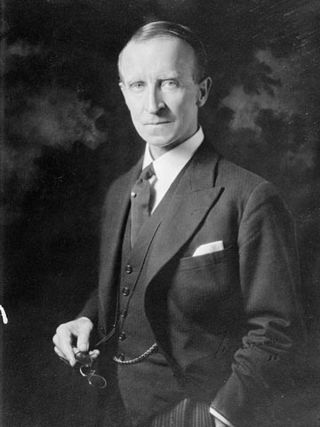
Baron Tweedsmuir, of Elsfield in the County of Oxford, is a title in the Peerage of the United Kingdom. It was created in 1935 for the author and Unionist politician John Buchan. He served as Governor-General of Canada from 1935 to his death in 1940. His eldest son, the second Baron, was the husband of the Conservative politician Lady Tweedsmuir. As of 2010 the title is held by the second Baron's nephew, the fourth Baron, who succeeded his father in 2008.
Baron Crawshaw, of Crawshaw in the County Palatine of Lancaster and of Whatton in the County of Leicester is a title in the Peerage of the United Kingdom. It was created on 25 August 1892 for Sir Thomas Brooks, 1st Baronet. He notably served as High Sheriff of Lancashire in 1884. Brooks had already been created a baronet in the Baronetage of the United Kingdom, of Crawshaw Hall and Whatton House, on 9 February 1891. As of 2013 the titles are held by his great-grandson, the fifth Baron, who succeeded his elder brother in 1997.
Baron Cochrane of Cults, of Crawford Priory in the County of Fife, is a title in the Peerage of the United Kingdom. It was created in 1919 for the Liberal Unionist politician and former Under-Secretary of State for the Home Department, the Hon. Thomas Cochrane. He was the second and youngest son of Thomas Barnes Cochrane, 11th Earl of Dundonald. As of 2017 the title is held by the first Baron's great-grandson, the fifth Baron, who succeeded his father in that year. The fifth Baron is also third in line to the Earl of Dundonald.

Baron Rea, of Eskdale in the County of Cumberland, is a title in the Peerage of the United Kingdom. It was created in 1937 for the businessman and Liberal politician Sir Walter Rea, 1st Baronet, who had earlier represented Scarborough, Bradford North and Dewsbury in the House of Commons. He had already been created a Baronet, of Eskdale in the County of Cumberland, in 1935. He was succeeded by his eldest son, the second Baron. During the Second World War he served as personal staff officer to Brigadier Colin Gubbins, the Head of SOE, a key British intelligence and guerrilla operations agency. Lord Rea served as Leader of the Liberal Party in the House of Lords from 1955 to 1967. His daughter, the Right Hon. Ann Felicity Rea, married SOE veteran Malcolm Munthe in 1945. His nephew, the third Baron, who succeeded in 1981, was a physician. He was one of the ninety elected hereditary peers elected to remain in the House of Lords after the passing of the House of Lords Act 1999, and sat on the Labour benches. As of 2020 the titles are held by his son, the fourth Baron, who succeeded his father in that year.
Thomas Macpherson, 1st Baron Macpherson of Drumochter, was a Scottish businessman, and Labour Party politician.